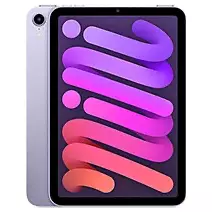Your iPad is a great tool for language learning. If you’ve got a new iPad mini in an iPad mini 6 case, you can take it anywhere with you and practice your vocab everywhere you go. But even if you’ve got a larger model, an iPad is portable by nature. It’s that combination of portable design and full-powered OS that makes it so great for learning— especially language learning, which depends so much on the audio and video the iPad is great at.
What apps are best for language learning? Here we’ll do a rundown of some you won’t want to do without. Though our list includes both paid and free apps, you’ll be pleased to know that the (arguably) best language-learning app has a robust free tier that allows you to learn almost any language your heart desires, from Welsh to Sanskrit to Klingon.
Duolingo
Duolingo is currently the most popular language learning app in the world, and there’s a reason for that. It’s easy to use, versatile, and incredibly well designed. The actual language programs are created by volunteers, and the courses are 100% free at every level. There is a paid tier, but that primarily involves gimmicks like ‘unlimited hearts’ and some AI-driven practice lessons.
The ten million people who use Duolingo on a daily basis complete vocabulary and sentence-building quizzes to move forward on pictorial course-map and rack up XP and gems, part of an in-house competition against everyone else on the app. Duolingo also boasts 42.4 million active monthly users— users who login at least once a month— and 3.3 members of ‘Duolingo Plus’, the paid tier.
As an English speaker, you can learn 39 languages on Duolingo (there are a total of 43 language courses, including English courses for speakers of other languages. Not every course is as complete as every other; the number of features available typically depends on the number of learners, which varies widely. Spanish, for instance, boasts 30.3 million learners, but Navajo, a beta program, has just 291 thousand.
So what’s wrong with Duolingo? What it does is done well: teach grammar and sentence structure in a fun, fast-paced, gamified environment. What it doesn’t have is real interaction in your target language, so you’ll have to get that elsewhere. You’re not going to become conversant in any language by doing Duolingo— that requires actual practice— but you can amass an impressive vocabulary and get the tools you need to thrive when you have the opportunity to really practice.
Tandem
Tandem starts where Duolingo stops: at conversation. A messaging service which connects would-be learners with would-be teachers (who usually are would-be learners of another language), it’s an easy, fun way to practice languages online.
Tandem doesn’t teach grammar, vocabulary, or anything else. But it is a great place to practice, and you’ll get your sentences corrected in-app by native speakers that engage with you in real, organic conversation. The app allows for text, voice note, or audio and video calls, and in-app translation allows you a fall-back if you can’t figure out what your partner is saying.
There are other language-practice messaging apps out there— HelloTalk being one of the biggest. We prefer Tandem because of their review process which tends to weed out the sketchy characters that can make HelloTalk less than comfortable. If you’re careful about your privacy settings, though, HelloTalk can be a great app too. Looking for more of the same style? Look at HiNative or
iTalki
Crowdsourced learning is great, but are you craving something more professional? That’s where iTalki steps in. With iTalki, you get real one-on-one input from an actual teacher and native speaker who is committed to your success.
The app functions as an online marketplace. Choose your language, and you’ll get to scroll through the listings of relevant tutors and view their profiles, price bracket, and scheduling availability. iTalki has instructors available for languages that aren’t on Duolingo— more than 150 options— and the prices are quite reasonable. There might be some aspect of ‘you get what you pay for’, and you may have a better experience with a $20 teacher than one that charges $5/hr (hint: check the ratings, or start with a trial lesson or two). But where else can you get a in-home tutor for Altaic Mongolian or upper level Swahili?
As an extra bonus, you get to help someone in your target language community make a living by spreading the language love— it’s money you can feel good about.
You, Your iPad and Language Learning
Scroll through the app store, and you’ll find many more language learning apps beyond the three we’ve highlighted there. There’s Rosetta Stone, old-school software with many an award for language teaching, ported into the iPad ecosystem for your learning pleasure. There’s Memrise flashcards, Busuu lessons, and Triplingo for crash courses to take just before your summer vacation. Lingorilla is game based, and is Mindsnacks. Want to hear conversations between native speakers of a language? Try one of the thirty-three lessons on Mondly.
When learning language on an iPad, options abound. The key is commitment, perseverance, consistency. A few minutes every few month is not going to get you anywhere. A few minutes every day? That just might. Your mind is made to learn a language in segments, bit by bit. And an iPad is great for that kind of bite-sized learning.
But as you have fun learning languages, remember not to loose your connection with the real world these language are spoken in. A thousand phrases learned in Duolingo can only help you if you can actually bring those phrases out of you mouth in real conversation— or understand them when they’re spoken in a flow of words from a friend or shopkeeper. Whenever possible, immerse yourself in your target language and make yourself practice the things you’ve learned. A combination of real-life practice and iPad memorization may be the easiest way to learn any language in the world today.
